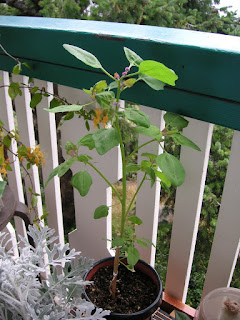
Oy! This was play the game of spot the difference between the individual shown above and the
bernardino dotted blue I posted from the previous day. Here are my own (layman) explanations of why I'm leaning towards an acmon blue ID:
1) Almost every picture of bernardinos I've seen have a black spot that touches the costal margin (leading edge of the forewing) at around the 3rd row of spots down from the outer margin. It is missing here as it is with acmons.
2) The overall appearance of the spots on the forewing are rounder like with acmons, rather than squarish with bernardinos.
3) Most pictures of bernardinos I've seen have 4 spots on the hindwing between where the wing attaches to the body and the cell-end bar (dash in the middle of the wing). The 2nd spot up from the hindwing trailing margin (wing edge along the abdomen) is missing, again, like with acmons.
4) Bernardinos have flat black spots on the outer edge of the hindwing and acmons have
iridescent blue spots. Either they were worn off on this older butterfly or the backlighting hides the effect such that the spots appear all black.
5) It is not obvious that this butterfly has checkered fringes on the forewing, which is common in in bernardinos. Yet, there is the possibility they were worn off of this older butterfly.
6) Speaking of worn, older butterflies, I also posted a
top-side view of an acmon blue from the previous day. This tells me the flight period is almost exactly the same, whereas the bernardino blue was fresh.
Sigh, this is probably way more detail than anyone wants to read. Lepidopterists must be excruciatingly nitpicky, closely followed by botanists. Can you imagine if we applied these same miniscule differences to other living things? To humans? Well, this person has green eyes and that person has hazel eyes, so they "must" be different species. I have to laugh at myself, because what the heck am I doing with this blog? Two years ago I couldn't even tell you the difference between
chinese houses and
sky lupine, and now I'm counting the dots on a tiny butterfly's wing.

















































